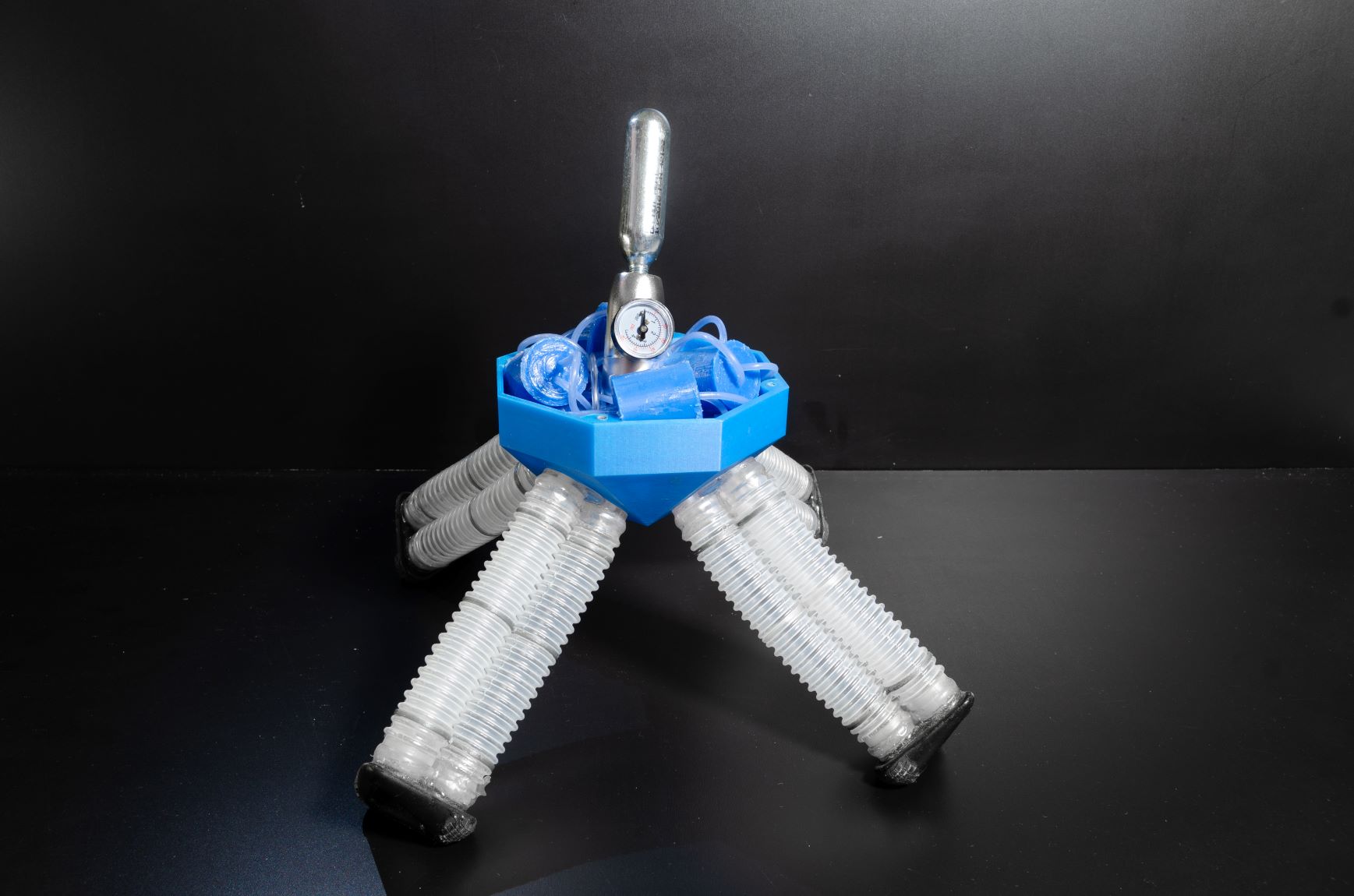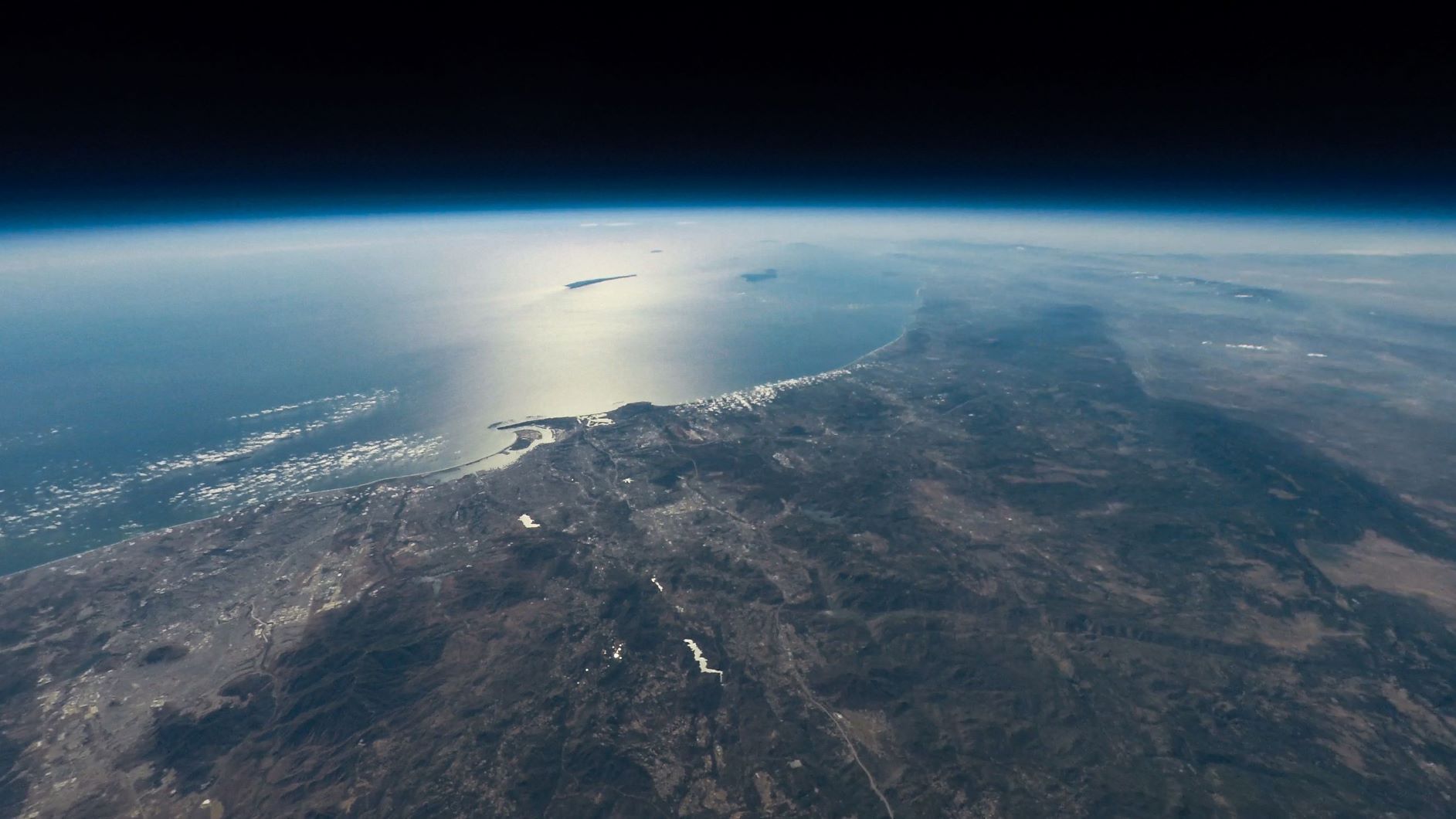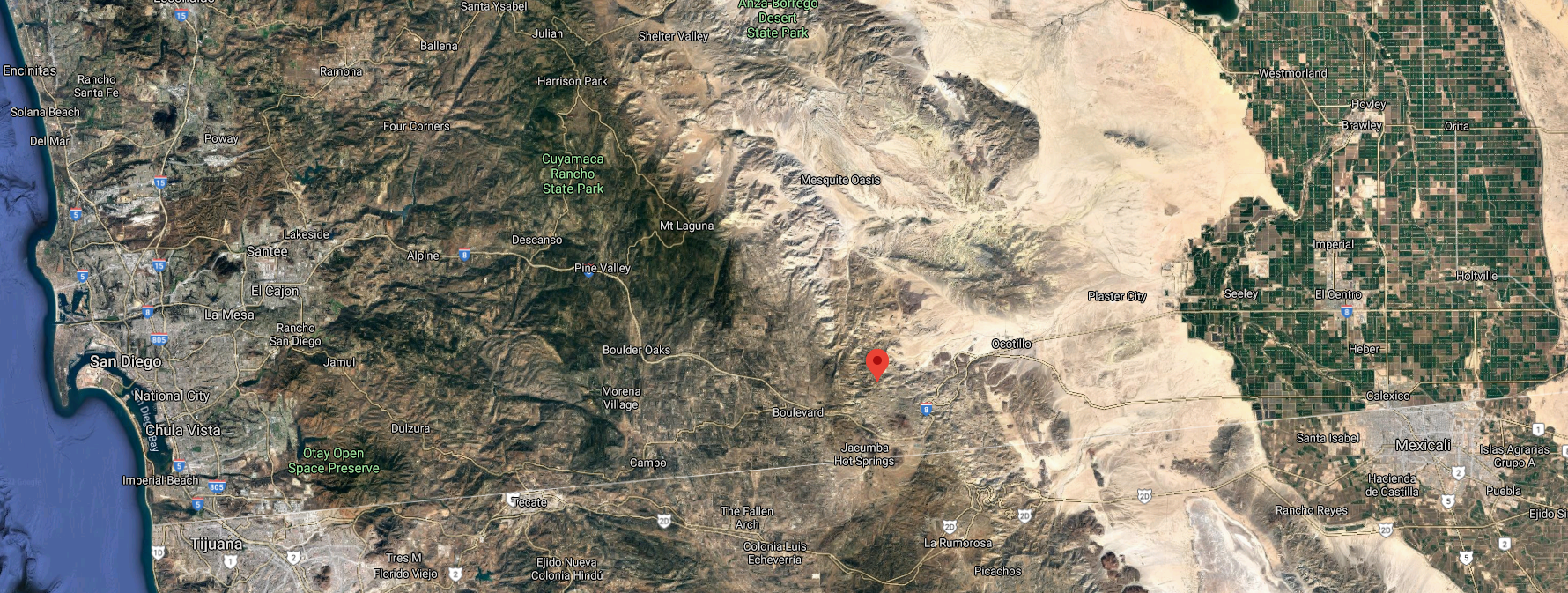Projects
Check this stuff out! Here are some of the extracurricular projects that I have worked on in my practically nonexistant spare time. These are some experiences that I have been super happy to be a part of. I've met some really awesome people along the way, so this is a shout out to them as well. If you are interested in a particular project, click the header, and it will redirect you to a dedicated project page if it has been completed.
Airwalker
I spend a lot of time building and testing squishy robots. In more technical terms, soft robotics is a super exciting developing field. The focus on compliant mechanisms and deformable bodies allows robots to do things that were previously thought to be impossible. Even in this novel field, this particular squishy robot is special. Not only is it made mostly out of deformable silicones and plastics, it runs without the use of any electronics. This robot can walk, squat, stand on its toes, change its gait, and react to its surroundings all powered by nothing but pressurized air. This was a great project to be a part of, and working with Dylan, Saurabh, and Christian has been a highlight of my undergraduate career.

Look Mom! No electrons!
In addition to being a cool project, this robot has also been the focus of my research while working as an undergrad in the UC San Diego Bioinspired Robotics and Design Lab headed by Dr. Mike Tolley. It has been an invaluable experience to be a part of that lab, and getting to work on this robot has been incredible. I have felt elation, frustration, confusion, and excitement while working on this robot, and I have learned so much along the way. As it turns out, I'm not the only one who thinks this project is awesome. Recently the work from our group, with Dylan at the helm, was published on the cover of the February issue of the journal Science Robotics.

Seeing my photo on the cover was a really awesome moment.
Too read more about this check out my research page.
Read More...
Horizon Balloon Launch
What happens when you combine the knowledge, experience and capacity for harebrained ideas of three aspiring aerospace engineers? You get to find out exactly how expensive helium is, send a camera to the stratosphere, chase a weather balloon to the edge of San Diego County, nearly collapse of heat stroke, and get stuck at a nudist colony. Well, maybe you don't, but we sure did.

Hey I think I can see my house from here!
This project was a really exciting way to combine my passions of aerospace engineering and photography. As a tangential offshoot from another crackpot idea, Andrew, Todd and I thought it would be fun to launch a weather balloon. Our goal for this mission was to determine how high we could lift a small payload, record avionics and atmospheric data for the duration of the flight. Putting my GoPro on the line, I pitched that the payload should be a camera. We took the idea and ran with it.
We soldered together an Arduino based circuit with GPS and atmospheric sensor modules to create our electronics package. This, and the camera, were connected to a portable phone charger which acted as the systems battery. To better facilitate recovery, we added a SPOT trace to the package. We used open source software to simulate the ascent and descent of the balloon based on the initial launch location, expected wind behavior, balloon volume, and payload mass. After some at-home testing of the electronics and parachute, we filled the balloon and sent it on its merry way.
As anyone who has listened to the weather report in San Diego knows, meteorological predictions are not always accurate. Our package was initially expected to touch down somewhere near Julian. We were hoping to get some pie as a part of our recovery mission. However, as we watched the real time location inch closer to the Mexican border, we realized that we might be in for a change of plans. Fortunately, I did not have to brush up on my Spanish. The wind shifted north and set our balloon down safely in the middle of bum%#*$ nowhere. That is an exactly appropriate description.

[32.697979, -116.171143] also known as nowhere.
Trying to get the package, and my GoPro, back proved to be a rather difficult affair involving two seperate attempts. The payload had parachuted down to a point miles off the nearest road or even hiking trail. On the second recovery attempt we were joined by Thomas who greatly helped us with our wilderness exploration. After hours of traipsing though the underbrush with a handheled GPS, we finally found or prize. However, it was not without cost. This expedition was complete with cactus prickles, scaling scalding rocks, and the effects of dehydration and exposure. At one point both border patrol and the sherrifs department were looking for us. They were not however looking very hard as we were made to wait for the sherrif for hours after having made it back to safety. The sherrif being a no-show, we left written statements and bailed to go get some sleep.
Those that know me well will accuse me of having thusfar left out the best part of this entire ordeal. We chose to wait for the sherrif at De Anza Hot Springs Resort which was next to the trailhead. Unbeknownst to us, De Anza Hot Springs Resort is a nudist colony. We quickly learned this when, while we were in the process of recovering in the main room, a couple walked in without any form of pants, sat down next to us, and began working on a puzzle. Our first assesment of the situation was that we had indeed contracted heat stroke and were deliriously hallucinating. That wore off quickly as we soon discovered the karaoke hall filled with happily drunk naked people about as in-tune as they were dressed. Although our stay at the hot springs resort was short and unexpected, the ameneties were nice, and the staff was exceptionally kind and helpful. If you happen to be looking for a place to take off all of your clothes in the company of others, I cannot recommend this establishment more highly.
It should also be stated on record that Thomas is a saint and I owe him a life debt. A special thank you also goes out to Todd and Andrew who made this happen.
Read More...
Proteus Inundation Sensors
This project was the result of a group of students coming together to solve engineering problems related to ocean science. Andrew, Seth, Julia and I connected through a graduate-level class at the Scripps Institute of Oceanography, where our group was mentored by CCCIA and tasked with developing a cheap network of flood monitoring sensors. This was a really cool opportunity to see how our engineering education can have a positive impact on local communities at risk of flooding and inundation.

Try to guess how many cups of coffee I've had.
Zephyr Emergency Ventilator
When the COVID-19 pandemic hit, we all wanted to do our part in solving the new problems the world was facing. Andrew, Varun and I decided to put our efforts into developing a low-cost emergency ventilator as a part of the international Give a Breath Challenge. This team eventually expanded to include Angel, Justin and Todd, all of whom were essential in getting a working prototype up and running. Ultimately, our design was selected as a finalist among the top three in the world.

We did pretty well for a group of college students working out of a dorm.
iGEM 2018: Epinoma
I cannot take credit for the full scope of this project, only a particular aspect of its realization. Epinoma was the result of all the work from Varun and his team for the 2018 iGEM competition. Towards the end of the program, I came in to help design their website, and Lee came on as our graphic designer. This stage of the project had immense time constraints, and we spent nearly 72 hours straight building this website fueled by caffeine and Dominos Pizza. This herculean effort paid off as the team received the prize of international first runner up for all that they had done. I'm super happy to have gotten to work with this team.

Everything on this website was constructed in one caffeine induced fever.
JSS Website
For the last four years I have acted as the designer and curator of the website for the Jacobs Scholars at UC San Diego. I have worked to create a platform with a lot of room to go as my job gets passed on to the next webmaster when I graduate.
